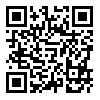BibTeX | RIS | EndNote | Medlars | ProCite | Reference Manager | RefWorks
Send citation to:
URL: http://ph.aui.ac.ir/article-1-225-en.html
2- University of Isfahan
3- Art University of Isfahan
Although the flourishing of steel art is associated with the Safavid period, the Qajar era can also be considered as the summit of steel applications, particularly in making tools. Two groups of trades, producers and users, have used the tools. Diversity of the tools is representative of dramatic development in terms of form and function in this period. The characteristics of steel products in this period was the attantions towards the form and decoration, so that the form alone has acted as a kind of ornament and ornament served for the form. In this regard, a question arises that what is the correlation between form and motif, form and function and the quality of making and decoration? The aim of this study is to identify the steel tools of this period at the first phase and then indicating the relationship between form and function of such a tool. The authors have applied the analytical method and qualitative evaluation, relying on documented sources and field studies (Museums of Iran) to review and classification of steel tools trades in Qajar period. The results indicate that excessive interest in decorating with naturalistic and animal forms, with an emphasis on purity of the form, with specific consideration of the relationship between form and function, and empiricism through patterning European instruments, have been the main characteristics of steel tools trades in Qajar period.
| Rights and permissions | |
 |
This work is licensed under a Creative Commons Attribution-NonCommercial 4.0 International License. |





